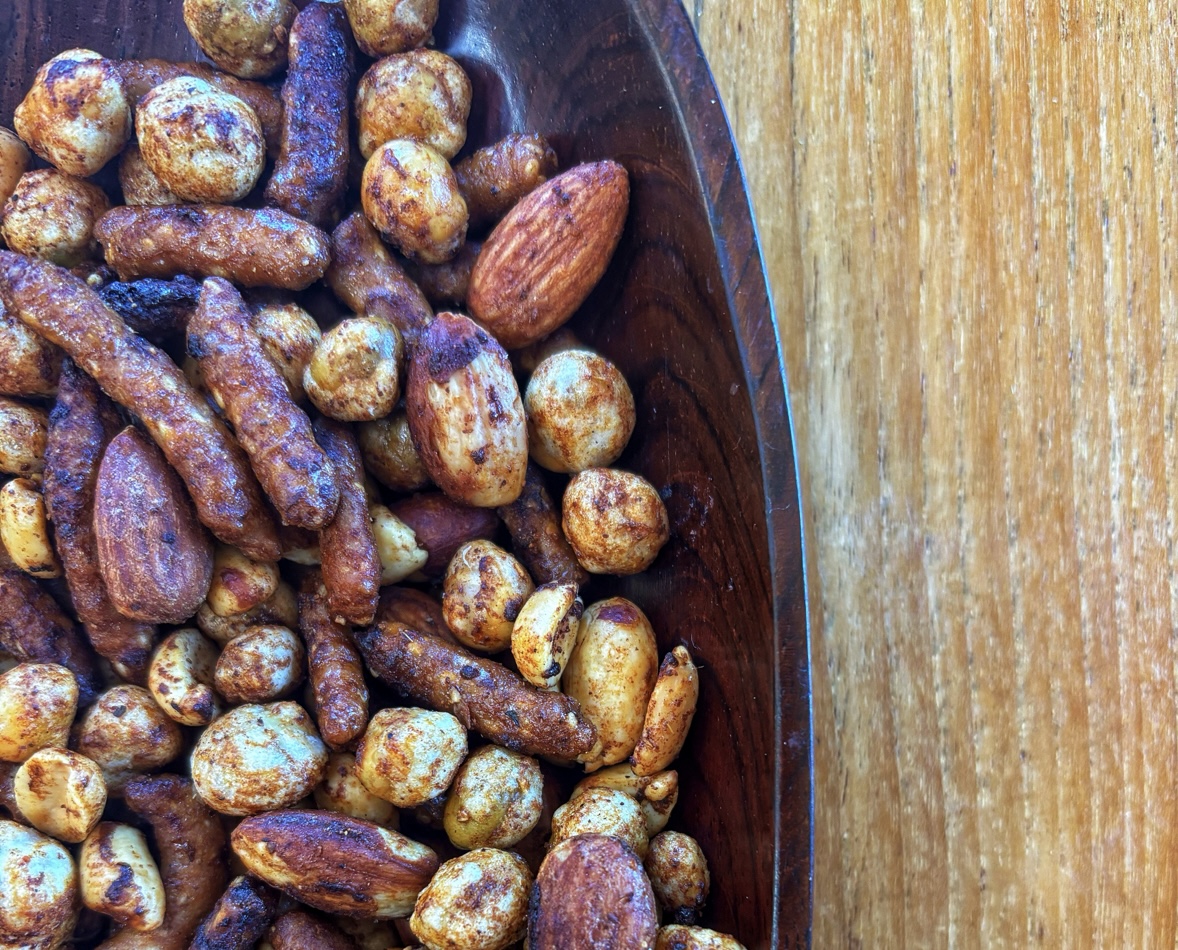Ask yourself – really ask yourself, “What is it that I like about food?”
Most of you will probably answer, “I like the way it tastes.”
Or, is it the flavor? Aren’t they the same?
That is a question that has been asked, and answered, for ages. And still, many of us just can’t grasp the difference.
In short, taste is the sensory deciphering of a food – using the tongue to decipher sweet, sour, salt, bitter and umami. Flavor takes that event and adds a cognitive impression, adding ones sense of smell, hearing, touching, texture, and the experience to it all.
A July 10, 2009 Science Friday broadcast on NPR, discussed our insatiable appetites and how we have become hard wired to crave the taste of salt, sugar and fat. This trio of tastes has a powerful hold over us, thanks to the big packaged foods companies who have spent loads of money on research trying to find exactly how they can manipulate our palates into craving products they sell. (Think Lay’s potato chips and the “No one can eat just one” campaign.)
In fact, they’ve done such a great job at it that one chef interviewed on the program noted how he was dismissed from a job because he built a menu based on seasonal fresh, whole foods –exactly the opposite of what the customers wanted.
What happens when we eat salt, sugar and fat in high quantities is that our brains and bodies become wired to crave it. It is a cycle of craving that has become so strong that it is hard to break.
But what about the old adage, “Food is pleasure?” Well, to those addicted to sugar, salt and fat, there is a momentary pleasure gained from satiating that craving. But just like a drug, that satiation quickly subsides, only to drive you to crave it once again.
When I think of food as pleasure, I often think of how the Europeans join together for food throughout the day — whether it is for a café au lait and pastry in the morning or a plate of tapas enjoyed in the company of friends in the late evening. Flash back to America, and we sit alone at home or in cars, filling our quickly bellies with French fries, gallon sodas, and taco grandes. There is no real experience to add to the ‘flavor’ of the food.
As children, we sat through lessons about how we taste different sensations on the tongue – sweet, sour, salt and bitter (now, I believe they now include umami on the list).
But how often do we learn about the satisfaction that comes with the taste, the other intangible elements, or those memories, that are associated with the smells coming from Grandma’s kitchen, the sound of popcorn being popped on the stove, or the creamy mouthfeel of milk that hasn’t beenhomogenized. Just like the craving for sugar, salt and fat is deep inside of us, so, too, can the pleasures of the experience be embedded into our psyche, especially when it is associated with great tasting food enjoyed with family and friends. Now that is flavor!
But, if we continually taste the same things – salt, sugar and fat – then we forget how to taste real foods. We become bored with the process, instead consuming simply to satisfy that fleeting craving. We need to once again expand our palates so we can discuss taste independently – the sweetness of tomatoes in a salad, or the flakiness the butter gives to the pastry crust.
There is no denying that we all become accustomed to certain flavors, and that drives what we desire. We have individual preferences, and that is a result of many factors from age to genetics, to cutoms and the physiological reactions to foods. But one thing is clear, the flavor of foods is the most compelling influence in shaping our food choices.
What we have lost is the art of tasting. That is, the art of tasting the true flavor of foods – real food, not those created in a lab to imitate the bounty the Earth provides.
A lot has been said, written and reported on the benefits of eating whole foods, seasonal produce, foods that offer a distinctive terroir to the flavor, but that requires a monumental shift in the way Americans eat and the way they think about food.
In the coming months, Family Eats will take a look at the ways we can reawaken our senses to a broader range of foods – regional specialties or country classics. We’ll find ways to enjoy the taste and the flavor of foods. At the heart of this venture, we’ll focus on ingredients – from milk, oils and peanut butter to maple syrup, vanilla and butter – to provide you with information on how to choose quality ingredients, that will help reawaken our palates to a broader range of flavors, and to truly experience the true flavors of foods. We’ll also dive into the food traditions from around the world, learning how others experience food and family.
As we do this, all we ask is that you give yourself the moment to be present in the act of preparing and eating food.
In the words of Carlo Petrini in Slow Food: The Case for Taste
“Let us rediscover the flavors and savors of regional cooking and banish the degrading effects of Fast Food.”
Join us on the adventure.


